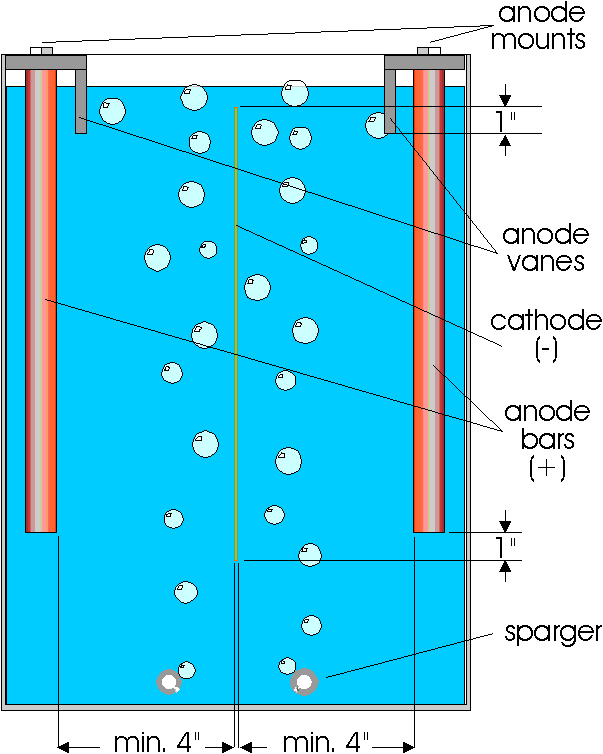|
Think & Tinker, Ltd.
P.O. Box 1606, Palmer Lake, CO 80133 Tel: (719) 488-9640, Fax: (866) 453-8473 Sales: Sales@thinktink.com, Support: Support@thinktink.com |
||||
|
Think
& Tinker Ltd.   SkypeMe at "thinkntink" |
IntroductionAcid copper plating is one of the most forgiving of the electrochemical processes encountered in manufacturing printed circuit boards. In most respects, that same can be said for the equipment that is used. However, before we launch off into a treatment of tank building, a very important consideration should be mentioned.Bath filtrationThe action of the ionic current in an electrolytic copper plating tank is such that, during plating, any and all suspended particulates will be forced toward the cathode (the panel that you are plating) and deposited. If the particles are large enough (5 to 20 microns), their presence can disrupt the local electrical field enough to reduce the effectiveness of the levelers present in the electrolyte. The net result of this "electrophoretic" migration is rough plating with the contaminating particles trapped in the electrolytic layer (right on top of a critical circuit element, no doubt). In a production setup, the plating electrolyte is usually filtered continuously using one or more 1 micron filters specially made for "polishing" electro-chemicals. If you anticipate using your electroplater more than once a week and if the bath volume is greater than 2 gallons, you should plan to incorporate this continuous filtration into your system design. In the case of small and/or infrequently used plating setups, you can maintain an acceptable level of bath "cleanliness" by making use of the electrophoretic pumping described above. The trick is simply to manually stir up your bath with a wand of some sort, turn on the sparger, and plate a "dummy board" at full plating current (20 ASF) for 1 hour before plating you PCB. Dummy plating will remove virtually all particulate material from the electrolyte.Basic constructionMost acid copper plating tanks are built using air "sparging" as their primary means of solution agitation (see Low-cost Bubble Assisted Process Tank because of the ease of implementation and reliability. The system should be based on a polyethylene, polypropylene, or PVC tank that is at least 10" wide, 3" longer than the longest PCB you anticipate making, and 4" deeper than the width of your widest board. Once you have selected your tank and installed the sparger, finish the plater as follows:

|
|||
|
||||
 Home
Home
